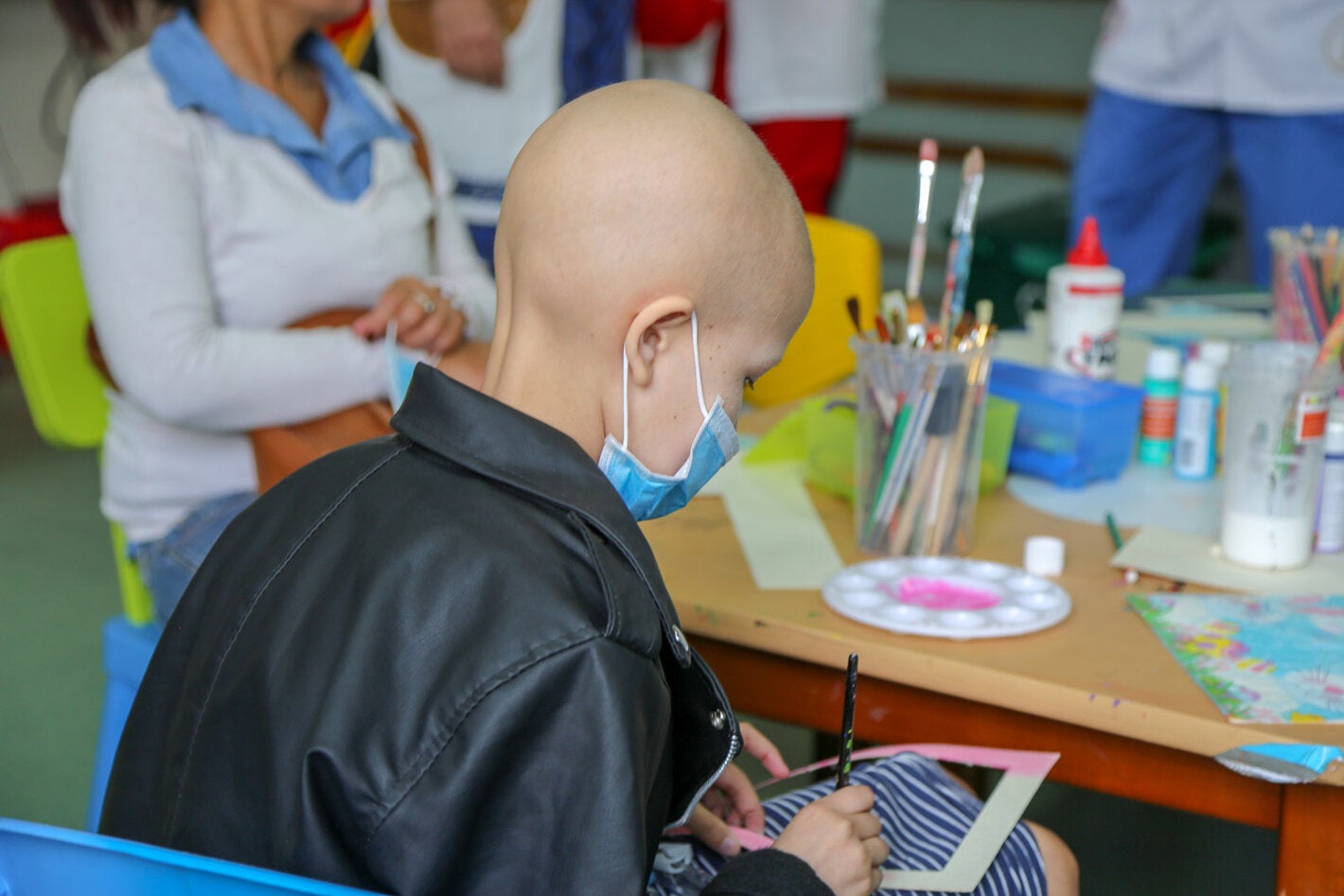
Estimates show that about 55% of children with cancer in the region survive. PAHO publishes new profiles on the situation
Washington, DC, September 16, 2021 (PAHO)- As part of Childhood Cancer Awareness Month, the Pan American Health Organization (PAHO) is urging improved diagnosis and treatment of childhood cancer, one of the leading causes of death in children and adolescents in the Americas.
Childhood cancer care services were severely disrupted when the COVID-19 pandemic started, according to a survey of pediatric oncologists in 20 countries in the Americas. Cancer patients are at increased risk of developing the most severe and life-threatening forms of COVID-19. Fortunately, these services are being resumed in most countries in the region.
To provide an overview of the childhood cancer situation that could inform decision-making, PAHO published both subregional profiles and 25 country profiles for Latin America and the Caribbean. These illustrate the burden of disease, current survival rates and the capacity of the health system to improve them.
Every year around 280,000 children between the ages of 0 and 19 are diagnosed with cancer globally, according to GLOBOCAN 2020, the database of the World Health Organization's (WHO) International Agency for Research on Cancer (IARC). In Latin America and the Caribbean, it is estimated that there are at least 29,000 children diagnosed, and about 10,000 will die, although most of these deaths could be avoided.
"A diagnosis of childhood cancer no longer has to be a death sentence," said Dr. Anselm Hennis, PAHO's Director of Noncommunicable Diseases and Mental Health. "Science has made great strides in recent years and early and appropriate diagnostic and treatment methods can save lives, but we need them to reach all those who need them, and many are being left behind," he noted.
Childhood cancer includes various types of tumors. The most common are leukemia, brain cancer, lymphoma, and solid tumors such as neuroblastoma and Wilms' tumor, a rare kidney cancer that affects children.
Preventable deaths due to childhood cancers occur because of failure to diagnose, incorrect or late diagnosis, and difficulties in accessing care or abandonment of treatment, among others.
PAHO launched a virtual course (for the moment only in Spanish) on early diagnosis of cancer in children and adolescents this month to improve the competencies and skills of primary care personnel, so that they can detect early and diagnose childhood cancer in a timely manner
Doubling the survival rate by 2030
To achieve at least a 60% survival rate worldwide for children with cancer by 2030, WHO is carrying out the CureAll initiative, which in the region is implemented by PAHO under the name CureAll Americas. Globally, the cure rate is 30%.
Twelve countries, including Brazil, Costa Rica, Dominican Republic, Ecuador, El Salvador, Guatemala, Panama, Panama, Haiti, Honduras, Peru, Panama, and Paraguay, are currently participating in CureAll Americas. They are developing or strengthening their national childhood cancer plans and expanding access to diagnostic and treatment services, with technical support from PAHO.
To improve countries' access to cancer treatments, PAHO, through its Strategic Fund, is currently consolidating regional demand for essential childhood cancer medicines, or their quality biosimilars at more affordable prices.



